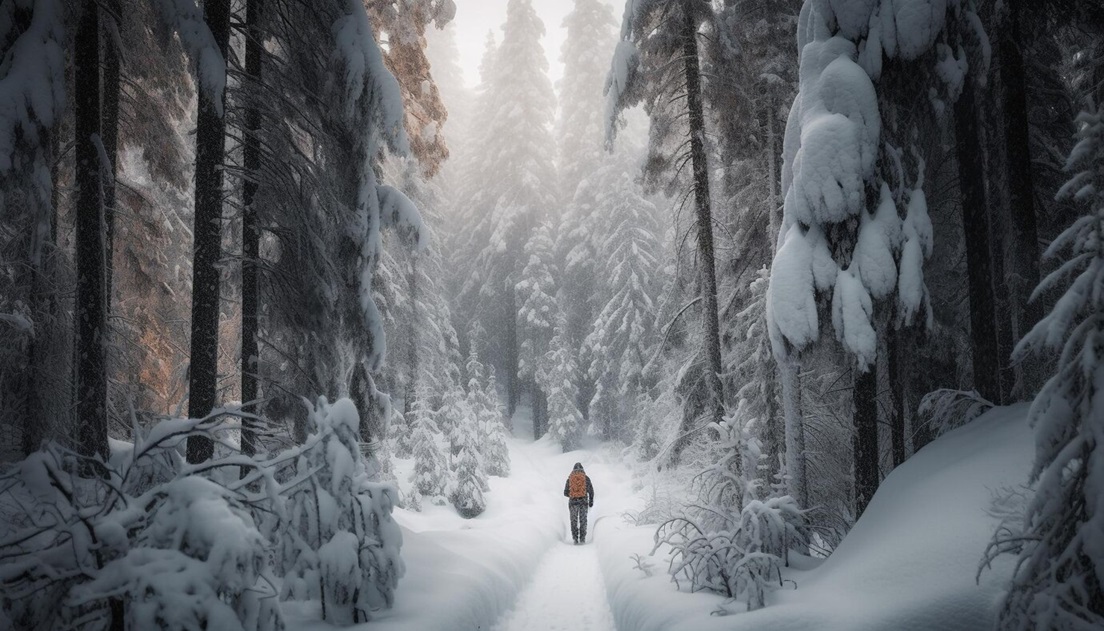Stopping by Woods on a Snowy Evening
by Robert Frost (1923)
Whose woods these are I think I know.
His house is in the village though;
He will not see me stopping here
To watch his woods fill up with snow.
My little horse must think it queer
To stop without a farmhouse near
Between the woods and frozen lake
The darkest evening of the year.
He gives his harness bells a shake
To ask if there is some mistake.
The only other sound’s the sweep
Of easy wind and downy flake.
The woods are lovely, dark and deep,
But I have promises to keep,
And miles to go before I sleep,
And miles to go before I sleep.
About the Poet
Robert Frost (1874-1963) was one of America’s most beloved and celebrated poets. Born in San Francisco, California, he spent most of his life in New England, which became the setting for many of his poems. Frost is known for his realistic depictions of rural life, his command of American colloquial speech, and his ability to capture ordinary experiences with profound philosophical insights. He received four Pulitzer Prizes for Poetry during his lifetime and was awarded the Congressional Gold Medal in 1960 for his poetic works. Despite the apparent simplicity of his poems, Frost often explored complex themes such as isolation, decision-making, and the relationship between humans and nature. His accessible style, combined with deeper meanings, has made his work popular in classrooms around the world.
About the Poem
“Stopping by Woods on a Snowy Evening,” published in 1923, is one of Robert Frost’s most famous poems. Written in a single sitting, this seemingly simple narrative describes a speaker pausing to watch snow fall in the woods during a journey. Through its gentle rhythm and vivid imagery, the poem creates a peaceful winter scene that invites readers to stop and appreciate natural beauty. However, beneath this serene surface lies a deeper meditation on responsibilities, the allure of solitude, and possibly even mortality. The repeated final line—”And miles to go before I sleep”—has become one of the most recognizable phrases in American poetry. The poem’s enduring appeal comes from its masterful balance between accessibility and depth, allowing readers of all ages to find meaning in its verses while appreciating its artistic craftsmanship.

















